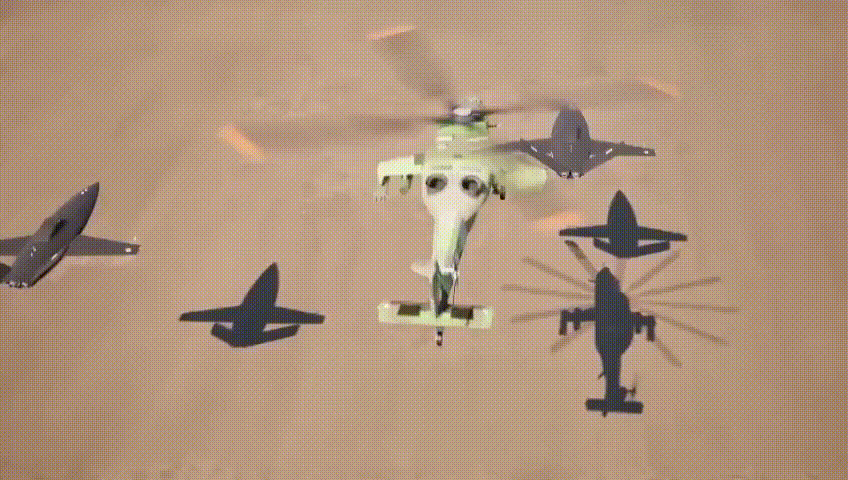SOURCE: IDRW.ORG

In a striking vision of India’s aerospace future, Harsh Vardhan Thakur, Chief Test Pilot at Hindustan Aeronautics Limited (HAL), recently shared a computer-generated imagery (CGI) video that has set the defense community abuzz. The video, posted on March 28, 2025, depicts the indigenous Light Combat Helicopter (LCH) Prachand flying in formation with HAL’s Warrior Loyal Wingman Unmanned Combat Aerial Vehicles (UCAVs).
This cinematic showcase hints at a transformative leap for the Indian Air Force (IAF) and Indian Army: the integration of manned and unmanned platforms operating in tandem, with the LCH Prachand potentially serving as a mothership for the Warrior UCAVs.
The LCH Prachand, aptly named “Fierce,” is India’s first homegrown multi-role light attack helicopter, designed by HAL to excel in high-altitude warfare and precision strikes. Inducted into service in October 2022, it has already proven its mettle in rugged terrains like Siachen and Ladakh, boasting a service ceiling of 6,500 meters (21,300 feet) and a lethal arsenal including 20mm cannons, rockets, and air-to-air missiles. Meanwhile, the Warrior Loyal Wingman, part of HAL’s ambitious Combat Air Teaming System (CATS), is an unmanned stealth platform engineered to complement manned fighters, extending their reach and firepower while reducing risks to human pilots.
Thakur’s CGI video illustrates a scenario where these two platforms converge in a seamless partnership. The Prachand, with its tandem cockpit housing a pilot and weapon systems operator (WSO), is shown directing or collaborating with the Warrior UCAVs, which fly alongside it in a tight, coordinated formation. This suggests that the LCH could evolve beyond its current role as a standalone attack helicopter, potentially acting as a command node—or mothership—for unmanned assets in future operations.
The idea of a manned helicopter like the LCH Prachand serving as a mothership for UCAVs is a bold leap in military aviation. Traditionally, mothership roles have been envisioned for larger fixed-wing aircraft, such as the HAL Tejas or Sukhoi Su-30MKI under the CATS program. However, extending this concept to a helicopter platform like the Prachand opens new tactical possibilities. With its agility, ability to hover, and high-altitude performance, the LCH could oversee a swarm of Warrior UCAVs, directing them to scout ahead, engage targets, or absorb enemy fire—all while the helicopter remains a safe distance from the frontline.
The Warrior UCAV, powered by twin HAL PTAE-7 turbojet engines, is designed for stealth and autonomy. With a range exceeding 700 km and internal weapon bays carrying precision-guided munitions, it can execute deep-strike missions or provide real-time intelligence to its manned counterpart. Thakur has previously revealed that the Warrior will feature an AI-based voice command system, allowing pilots to issue verbal instructions that the UCAV interprets and executes. If integrated with the LCH, this technology could enable Prachand crews to dynamically control unmanned wingmen, enhancing situational awareness and combat effectiveness.
This manned-unmanned teaming (MUM-T) concept could redefine how India conducts operations along its contested borders, particularly in mountainous regions where the Prachand already excels. Imagine a scenario: a Prachand hovers behind a ridgeline, deploying Warrior UCAVs to scout enemy positions, strike radar installations, or engage low-flying threats like drones—all without exposing the helicopter to direct fire. The UCAVs, with their stealth features and expendable nature, could take on high-risk tasks, while the Prachand delivers precision strikes with its onboard weapons or coordinates broader air support.
Such a capability would amplify the IAF and Army’s firepower, especially given the recent approval of a ?62,000 crore deal for 156 additional Prachand helicopters—90 for the Army and 66 for the IAF. Pairing these helicopters with Warrior UCAVs, scheduled for first flights in 2024–25, could create a scalable, cost-effective force multiplier, aligning with India’s push for self-reliance in defense technology.
While the CGI video is a conceptual tease rather than a confirmed program, it reflects HAL’s forward-thinking approach. Integrating the LCH with the Warrior system poses technical challenges, including robust data links for real-time communication, compatibility between platforms, and the adaptation of the Prachand’s avionics to manage unmanned assets. The helicopter’s glass cockpit, already equipped with an Integrated Avionics and Display System (IADS), would likely need upgrades to handle UCAV control interfaces—possibly leveraging the AI voice command system Thakur has championed.
Moreover, the Warrior’s development is still in its early stages, with HAL investing ?390 crore ($53.5 million) as of 2021. Full integration with the Prachand would require synchronized timelines, rigorous testing, and operational doctrine to define their combined roles. Yet, the potential payoff is immense: a versatile, high-altitude combat ecosystem that blends the Prachand’s proven reliability with the Warrior’s cutting-edge autonomy.
NOTE : Article cannot be reproduced without written permission of idrw.org in any form even for YouTube Videos to avoid Copy right strikes. Websites doing illegal reproductions will get DMCA and Legal Notices.